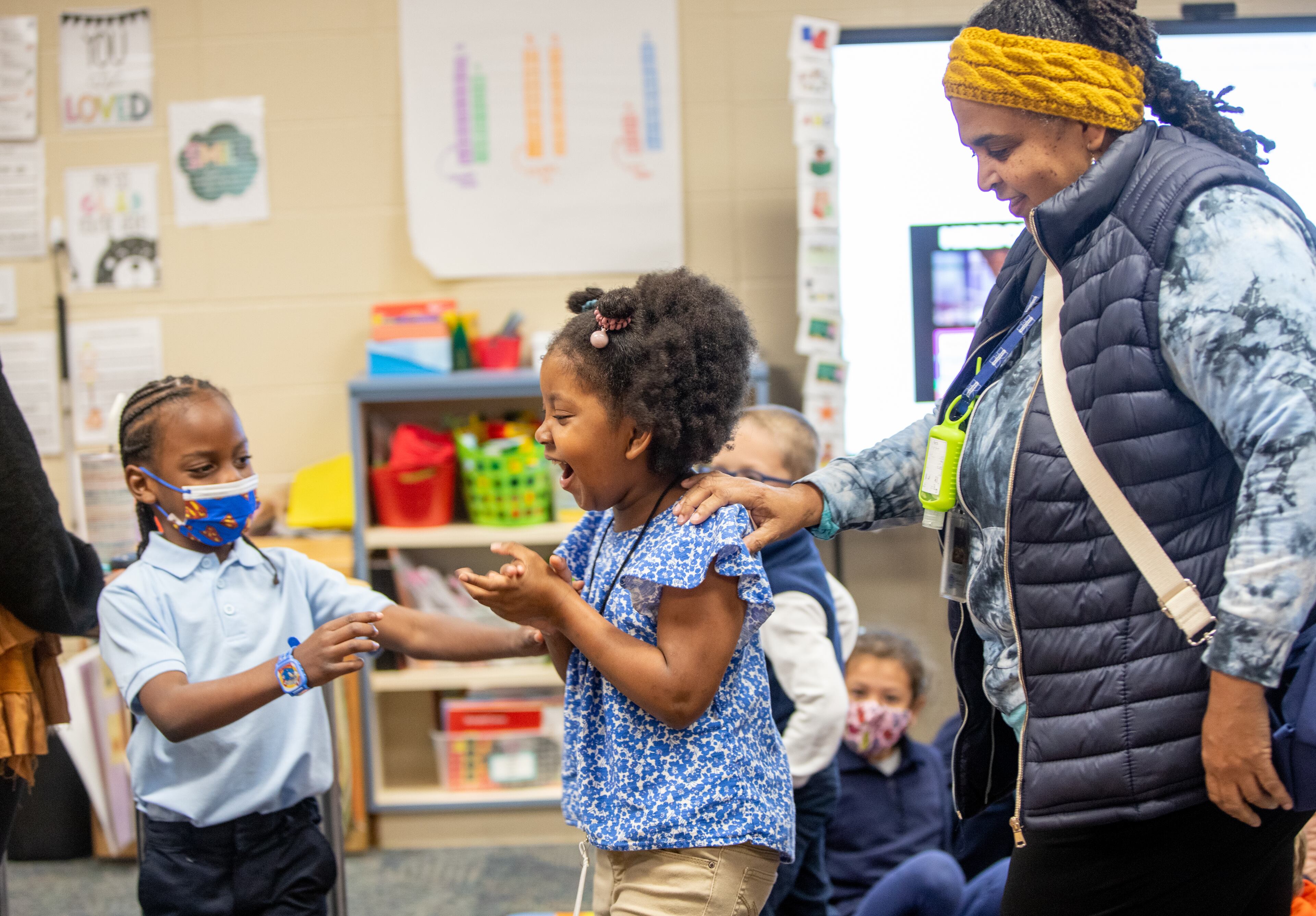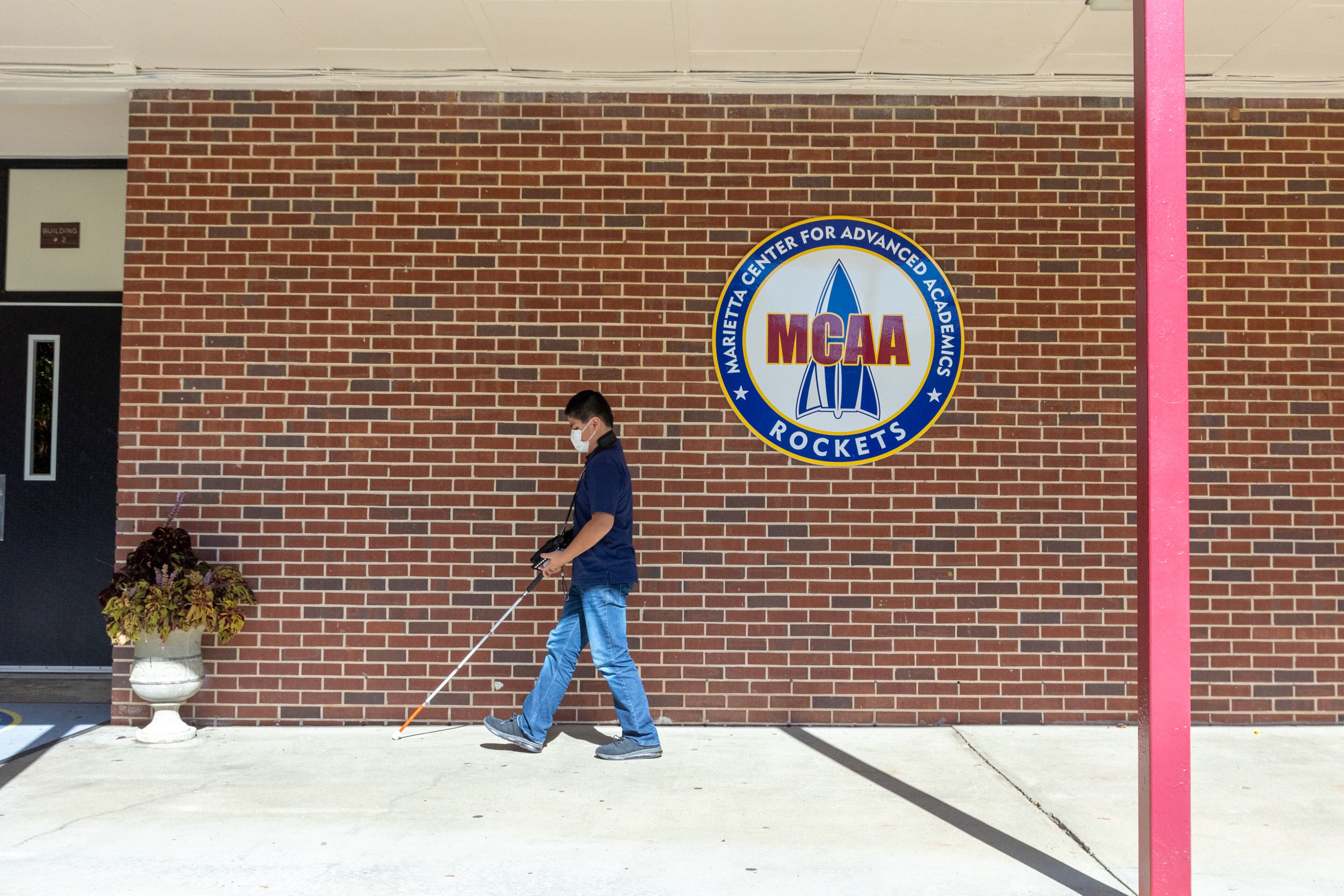Young lives, big hurdles: These Georgia students hit hard by pandemic









Many parents can talk about the hardship for their children when schools closed last year, but imagine attending online through a blank screen.
That was George Eaker’s experience.
The 12-year-old was in third grade when his Marietta elementary school closed, and he couldn’t readily engage with his classmates when they all went online together. They took to panning laptop cameras across their rooms, showing off a blanket, a fish, the family dog.
George is blind.
“He’s already a little bit isolated because of not being able to see,” his mother, Katie Eaker, said, “and being on Zoom — it was extremely isolating for him.”
By the time they returned to the classroom, he’d forgotten how to interact. If he had the wrong book, he’d just sit there, falling behind until the teacher noticed, said Tracy Fitch, his blind specialist.
Both she and his mom said George has caught up academically, but advocates say many blind students have not. And less measurable social and emotional setbacks may have affected them more than sighted kids.

Rachel Antoine, who oversees national programs and services for the Braille Institute, a Los Angeles nonprofit, said teachers of the blind have told her their students regressed academically and socially during the pandemic.
“A lot of kids who were thriving pre-pandemic kind of retreated and went back and are like grades behind what they were before,” she said. “They said their students have really regressed.”
For all kids, elementary school is like training wheels for life. They learn to read, write and do math before more serious learning begins in middle and high school. They also learn to interact, make friends and fend for themselves.
But the blind must learn an additional layer of skills and information. Braille is crucial for literacy and for better-paying jobs in adulthood. And the use of a probing cane — those white and red rods used to sweep for obstacles on sidewalks — is essential for mobility and independence.
Both were less effectively taught, or simply not taught, when kids were homebound, observers say. So were other less obvious yet crucial things.
A sighted person doesn’t think about turning on the light in the school bathroom, for instance, but a blind person must be taught to find the switch and flick it. They don’t need the light except as a social cue so others won’t be startled to find them there, Antoine said.
Some don’t know how to wave, moving their hands up and down rather than side to side, she added. Sighted kids learn things like that by osmosis, but blind kids must be explicitly taught. “That’s just something that is really hard to explain: how do you do a wave?”

On the Friday morning before Halloween, Marlie Langford’s mom has costumed her like a Dalmatian, with black spots on a white shirt and black whiskers drawn across her face.
Marlie is attending one of her frequent hourlong special sessions with Fitch, in a small room down the hallway from her regular classroom.
The kindergartner’s hands are flying across the table, scattering Braille notecards. She is quick to hug, always busy and always asking questions.
Fitch struggles to keep her attention, grabbing two stuffed toys from atop a metal filing cabinet to keep Marlie’s hands occupied.
The word “twins” came up during a recorded audio quiz, and Marlie wanted to know what it meant.
Fitch — the Braille Institute’s 2021 teacher of the year — said these sessions are both for learning Braille and for collecting “incidental” knowledge.
Once, Fitch let Marlie toss eggs on the sidewalk so she could hear them splat. On this day, Marlie got to lather her hands with a bar of soap since she only uses the liquid kind at home. Fitch prompted her to describe the sensation. When Marlie volunteered “soapy,” Fitch suggested squishy, soft and slippery, and noted that the bar had been getting smaller.
Fitch and teachers like her hope to prepare children like Marlie for independence as adults.
Marlie already knows some of the patterns used to depress the nine keys of her blue Brailler in a way that translates letters and numbers into raised dots on paper.
However much she learns in these sessions, though, she will probably always have to rely on sighted people for help.
On that morning before Halloween, Marlie interrupted her Braille lesson to ask if she still had whiskers on her face. She would soon be headed back to her regular classroom, where other kids were in costume, too.
Fitch assured her the lines were intact and said they wouldn’t come off easily.
Marlie asked: “You promise me?”


